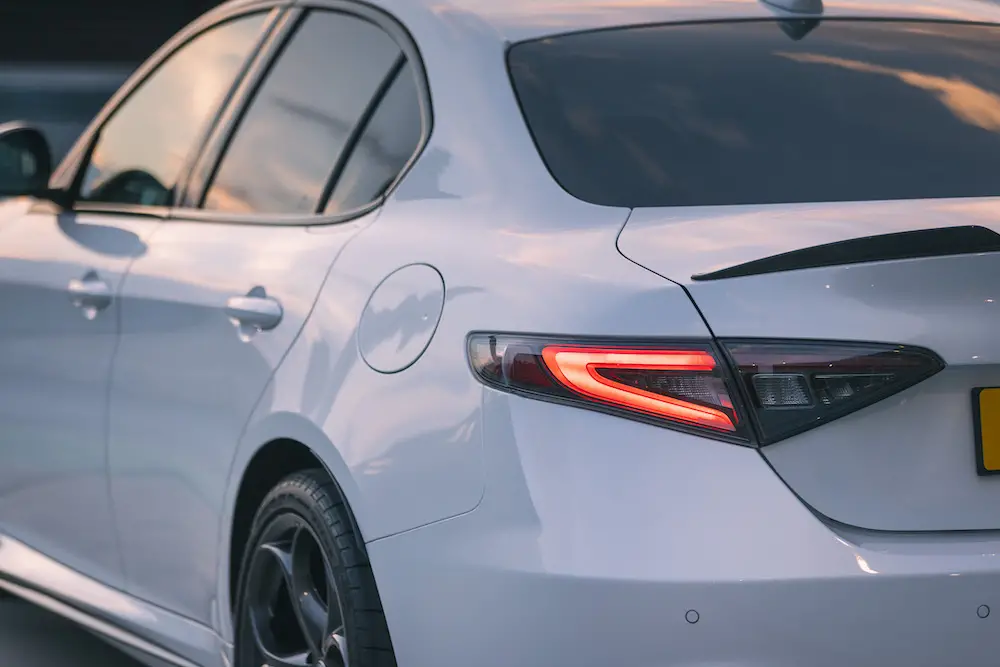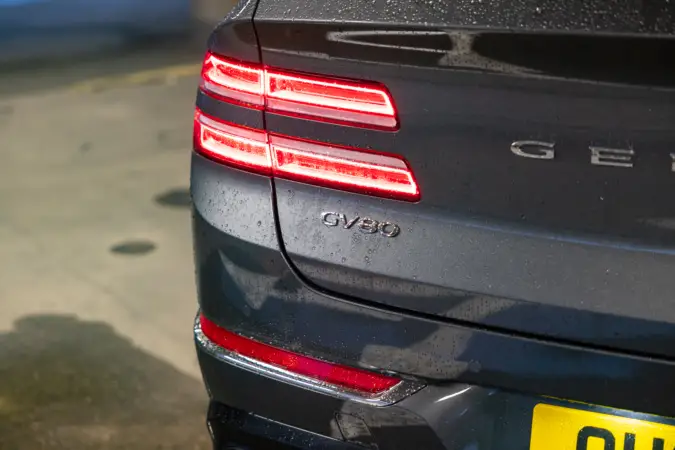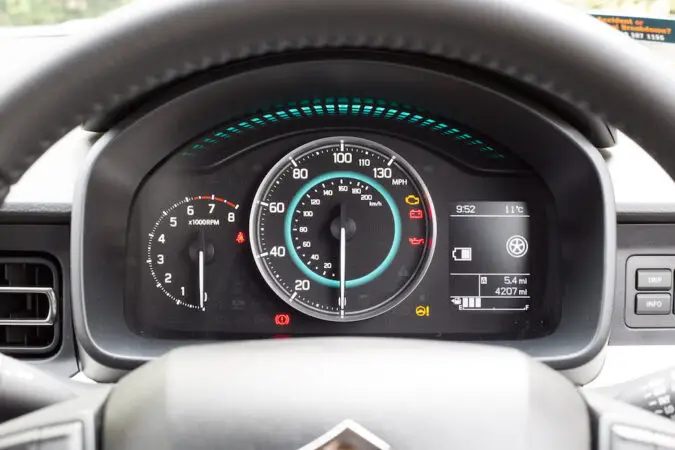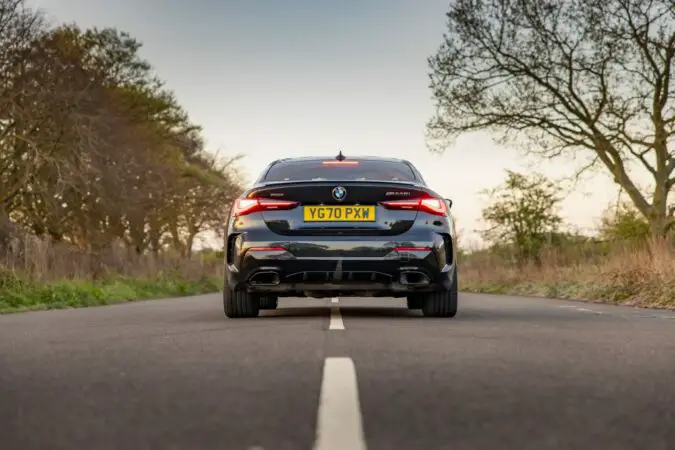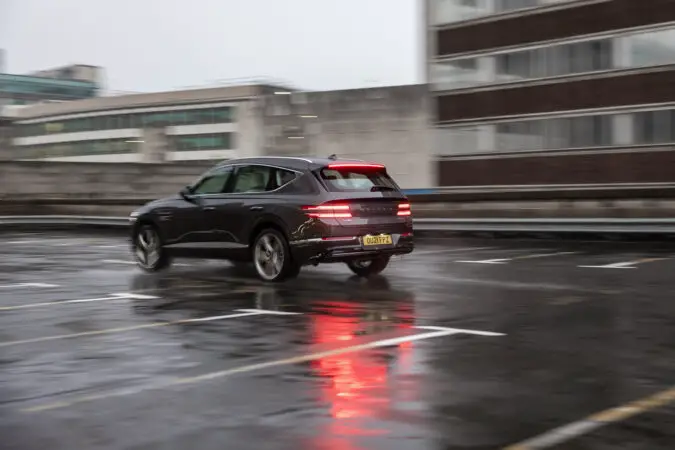As a vehicle owner, there are many aspects of it that deserve your attention. These include everything from major components like the engine, gearbox, and clutch, to minor parts like the windshield wipers and side mirrors. The lights of your vehicle are another important area that deserves your attention, and it might be worrying when you spot a fault with them. Has the question “why is my brake lights staying on” crossed your mind recently?
If so, you’ll find the answer to your question at the end of this article.
Not only are faulty brake lights a danger to you and other commuters on the road, but it is illegal in many parts of the world as well. So, identifying brake light issues, such as how your brake lights won’t turn off. before they cause any major harm is essential. Let’s start off by taking a look at the history of the brake light as well as its inner workings.
Brake Light
Before diving into the topic “why is my brake lights staying on”, we thought of taking a look at the history of this important device. In the early days of motoring, automobiles used fuelled lamps. One of the most influential vehicles ever, the Ford Model T, used carbide lamps in its first few model years before shifting towards all-electric lighting.
Florence Lawrence, a silent film star, is generally regarded as the creator of the first mechanical brake signal.
The introduction of the brake lights we know today happened around 1915. However, the lights weren’t integrated into body styling until three decades later.
The advent of LED taillights is another significant milestone in the evolution of taillights. These were first used in 1984 in the Chevrolet Corvette. LEDs are a uni-directional light source, meaning that they only emit light in the forward direction. This eliminates the need for reflectors and allows car designers to be more creative.
Additionally, LED taillights have several benefits as well. Some of the most notable advantages include,
- Increased Safety
- Ease Of Installation
- Long Lasting
- More Visibility
- Durability
1. Increased Safety
One of the main advantages LED taillights have over regular ones is increased safety. You see, traditional taillight bulbs have to produce heat in order to produce light. As a result, there is a delay between when you press the pedal and the light activating.
However, this is not the case with LEDs. They are instantaneous and will activate as soon as the current passes through. And you never know, this instant response can be the difference between you getting into an accident or not.
2. Ease Of Installation
As with all vehicle parts, the taillights will develop some issues over time as well. We will be taking a look at several of these issues later on in this article. And when your traditional taillights do go bad, one of your best options is to replace them with an LED pair.
Unlike regular taillights, LEDs only take around 15 minutes to install. Moreover, you can complete the installation using just a few simple tools, and you can find many guidance materials online. If you can’t do it yourself, you can always look up where can I get my brake lights fixed.
3. Long Lasting
As we mentioned earlier, LED lights don’t produce any heat and don’t contain a filament. So, they tend to be longer lasting than regular ones. When compared to the 1000-hour lifetime of an incandescent bulb, LED taillights can last upwards of 25,000 hours. On top of saving you money in repair bills, this long-lasting nature can save you valuable time as well.
4. More Visibility
The light produced by LEDs is both brighter and more noticeable when compared to regular bulbs. This is due to their quality of projecting light outwards towards the oncoming vehicles. When you are more visible, the chances of you getting into an accident reduce significantly.
5. Durability
By design, LEDs are better equipped to handle external elements like humidity, and shock. Furthermore, they consume less power as well. Overall, once you install LED taillights, you won’t have to worry about them any longer.
Now that you know about the history of the brake light, let’s shift our attention toward what makes it function as it should.
Brake Light Switch
You can’t look into issues like “why is my brake lights staying on” without talking about the brake light switch. This small yet important device is attached to the brake pedal mechanism and plays a major role in controlling many aspects of a modern vehicle.
As the name suggests, the main responsibility of the brake light switch is turning on the brake lights as soon as the driver applies pressure on the brake pedal. In addition, the brake light switch signals the car’s ECU that the brakes have been applied.
Furthermore, it is important to note that faults in the brake light switch can have a negative effect on important systems like the ABS, push-button start, and vehicle stability control.
If your vehicle has a faulty brake light switch, it is unsafe to drive on public roads.
On most vehicles, the brake light switch can be found directly above the brake pedal. A faulty brake light switch shows several symptoms, including the likes of the brake lights not working (alternatively, the tail lights not working but the brake lights are or, the brake light is not working but the tail light works) and the check engine light turning on. Sometimes, a defective brake light switch may cause the vehicle not to start altogether.
One of the easiest methods to check whether the brake light switch is faulty is through the use of a multimeter. You don’t even have to remove the component from the vehicle in order to do so. However, the way you should inspect the switch varies between vehicle models.
Some manufacturers suggest checking the voltage at the brake light connector when the pedal is depressed and released, while others recommend testing the switch continuity. Either way, if there is no voltage at the switch, you might want to look into a fuse replacement.
Brake Light Switch Replacement Cost
If you have inspected the brake light switch and determined that it needs to be replaced, here’s some good news for you. It is not an expensive part to replace. Typically, the cost of the replacement part ranges between $15 – $45.
But, be prepared to add between $55 – $115 to get it installed by a professional. However, you can also save a few bucks and carry out the brake light switch replacement by yourself.
Brake Light On Dash
Modern cars are more technologically advanced than they have ever been. So, it can be worrying when the gauge cluster displays a brake warning light. Actually, there is more than one warning light related to the braking system housed inside the dashboard. A few of the most significant ones are,
- Brake Hydraulic System Warning Light
- Press Brake Light
- ABS Light
- Brake Pad Warning Light
- Parking Brake Light
Let us look into each of these warning lights to better understand the causes behind them.
Brake Light On Dash #1 – Brake Hydraulic System Warning Light
The brake hydraulic system light is one of the most common warning lights associated with the braking system. It shows up in the form of an exclamation mark or the word “BRAKE” in red. When this light turns on, it usually indicates an issue with the hydraulics system.
The braking system of most vehicles comprises a network of brake lines filled with hydraulic fluid. These lines are connected to the master brake cylinder, which acts similarly to a pump.
When the driver pushes the brake pedal, the master cylinder actuates and pressurizes the brake lines, ultimately leading to brake pads rubbing against the brake rotors. The resulting friction is what slows the vehicle down and brings it to a stop. Owing to wear and tear, this is why folks often wonder how often to change the brake pads.
However, the brake lines can sometimes develop leaks, leading to the hydraulic fluid levels running low. This causes the aforementioned brake hydraulic system warning light to turn on. Hence, it’s crucial that you figure out precisely how much brake fluid do I need.
Usually, low fluid levels (often a sign of a brake fluid leak) are indicated by the warning light turning on intermittently. If the light stays on for a prolonged period of time, it might be due to another much more severe issue.
Some older vehicles use this warning light to indicate that the parking brake is engaged as well. However, this function has now been taken over by the dedicated parking brake light.
Brake Light On Dash #2 – Press Brake Light
The press brake light falls into the category of instructional lights, and can only be found in modern vehicles with push-button start systems. It turns on when the driver is required to place their foot on the brake pedal before starting the vehicle.
Some vehicles with automatic transmissions have this light as well. In this case, drivers have to engage the brake before shifting out of the Park gear and into either Drive or Reverse. However, the press brake light can turn on while you are on the road due to electrical malfunctions too.
Brake Light On Dash #3 – ABS Light
Anti-lock brakes are an important technology that prevents the brakes from locking up. This technology comes in handy on wet, slippery, snowy, sand, and even gravel surfaces. It is one of the most important safety innovations in modern vehicles and has aided in saving thousands of lives.
The ABS system uses several advanced components to make its work possible. Some components that stand out are the wheel speed sensors, the ABS actuator, and the ABS module (as is the case when you need to pay for an ABS module replacement cost). To find out more, be sure to check out our write-up on what does ABS stand for in cars, as well as the ABS system repair cost.
A failure in any of these components will result in the ABS warning light turning on in the gauge cluster. In addition, low fluid levels in either the ABS reservoir or the master cylinder reservoir can result in the ABS warning light.
Brake Light On Dash #4 – Brake Pad Warning Light
The brake pads of your vehicle wear out over time (it’s ideal to figure out and note down how long do brake pads last) and should be replaced at regular intervals. These brake pads have friction materials (like organic vs ceramic) on their surface that come into contact with the rotors each time you press the brake pedal.
Modern vehicles come equipped with sensors that monitor the wear of this friction material.
When they are reaching the minimum acceptable brake pad thickness level, the brake pad warning light will turn on (a good sign of worn brake pads – be wary of how long do brake pads last and how long does brake pads last), indicating that your car is due for a brake pad replacement.
The latter can be minimized if you learn how to change brake pads and how to install new brake pads. And, you could also learn more in our guide on how long do brakes last on a car, as well as how to replace brake pads.
This warning light should not be ignored. Instead, you should take your vehicle to a certified mechanic and get the brake pads replaced as soon as possible. Thus, it’s a good idea to learn how long should brake pads last. On the other hand, you can save on the brake pad replacement cost by performing it in the comfort of your home as well, and get to it with replacing brake pads.
Brake Light On Dash #5 – Parking Brake Light
The final brake system warning light we will be taking a look at is the parking brake light. As you might have already guessed, this light turns on each time you engage the parking brake. It acts as a reminder so that drivers don’t drive off with the parking brake engaged.
Brake Lights Won’t Turn Off
In an ideal world, the brake lights should only illuminate once you place your foot on the brake pedal to slow the vehicle down. However, several factors can cause these lights to stay illuminated indefinitely. Some of the most likely reasons that have led you to wonder “why is my brake lights staying on?” include,
- Faulty Brake Pedal Spring
- Electrical Malfunction
- Wrong Light Bulbs
- Stuck Brake Pedal
- Brake Light Switch Failure
- Riding The Brakes
Why Is My Brake Lights Staying On #1 – Faulty Brake Pedal Spring
You might have noticed that the brake pedal returns to its original position once you take your foot off of it. This is the responsibility of the brake pedal spring. You can find this spring inside the pedal mechanism.
As the vehicle gets older, this spring becomes weaker as well. As a result, the pedal won’t return back to its original position, leading to the lights remaining illuminated. In addition to keeping the lights on indefinitely, a faulty brake pedal spring can make your brake pads and rotors wear out faster as well.
Why Is My Brake Lights Staying On #2 – Electrical Malfunction
Faults in the electrical system can have lasting effects on a vehicle. This is true for the brake lights as well. Electrical malfunctions can cause the brake lights to stay on, work sporadically or not work at all. Diagnosing an electrical malfunction is a complex job, and it will cost you both time and money.
Why Is My Brake Lights Staying On #3 – Wrong Light Bulbs
If the brake light troubles started after a recent bulb replacement, this can be the reason for it. You see, there are two types of brake light bulbs out on the market. They are called one-circuit bulbs and two-circuit bulbs.
Installing a one-circuit bulb to a two-circuit socket or vice-versa can result in a short circuit. As a result, you will be left wondering “why is my brake lights staying on?”
Why Is My Brake Lights Staying On #4 – Stuck Brake Pedal
Much like the faulty spring, a stuck brake pedal will also result in your brake lights staying on. However, this will cause more harm than the previous situations we discussed. A stuck brake pedal should be fixed as soon as possible as it severely affects the drivability of the vehicle.
Why Is My Brake Lights Staying On #5 – Brake Light Switch Failure
We told you about the importance of the brake light switch previously, so it shouldn’t surprise you when we mention that it is another component that can lead your brake lights to stay on. A faulty brake light switch won’t shut off the electrical signal to the lights once you take your foot off the pedal, leading to the problem.
Although this issue is uncommon in modern vehicles, it is worth having a mechanic take a look at this component.
In addition to the brake light switch itself, failure of the rubber bumper on the brake pedal can also lead to the brake lights staying on.
Now that you know about some of the most possible causes for the brake lights staying on, let’s take a look at the fixes you can apply to sort out this issue.
Why Is My Brake Lights Staying On #6 – Riding The Brakes
Riding the brakes is a mistake most amateur drivers make. Driving with your foot resting on the brakes as a precaution might seem like a good idea, but keep in mind that it only takes a fraction of an inch to activate the brakes and turn on the lights. So, try to avoid doing this at all costs.
Brake Light Fix
Fixing brake lights that stay on is a repair that has multiple steps. Here, we will guide you through each of them, so that you can check and remedy the problem yourself. The steps included are,
- Inspecting The Brake Light Switch
- Replacing Fuses
- Bulb Replacement
- Cleaning The Brake Sockets
- Filling Up The Brake Fluid
Why Is My Brake Lights Staying On, Fix #1 – Inspecting The Brake Light Switch
The first step in fixing the brake lights is inspecting the brake light switch. You can find the brake switch under the dashboard right by the brake pedal itself. Ideally, the switch should depress completely along with the pedal. If that is not the case, you should look into replacing the brake light switch with a new one.
Why Is My Brake Lights Staying On, Fix #2 – Replacing Fuses
Blown fuses are another common cause of faulty brake lights. So, you should inspect the fuses to determine whether any of them need replacing. Refer to the owner’s manual to identify the location of the fuse box.
Depending on your vehicle, some trim panels might need to be removed in order to access the fuse box. Once you get to it, inspect all the fuses, and replace the blown ones.
Why Is My Brake Lights Staying On, Fix #3 – Bulb Replacement
Like other components of the vehicle, the bulbs can burn out with time too. There are two possible outcomes of a burnt-out bulb. The lights will either stay on forever or go out completely. Usually, older vehicles with traditional bulbs require replacements more often than modern ones that come with LED taillights.
Why Is My Brake Lights Staying On, Fix #4 – Cleaning The Brake Sockets
When corrosion, dirt, or debris gets stuck in the brake sockets, there is a possibility for the lights to get stuck in the on position. Cleaning out the sockets will prevent this from happening in the first place. If the sockets are in very poor condition, you should snip the old wires out and splice in a new unit.
Why Is My Brake Lights Staying On, Fix #5 – Filling Up The Brake Fluid
Having adequate brake fluid is essential if you want to have perfectly functioning brake lights. You can easily check the brake fluid level by taking a look at the brake fluid reservoir or the master cylinder. If you plan to add in some new fluid and change the brake fluid, remember to flush out the old brake fluid beforehand. While you’re there, remember to tally up the brake fluid flush cost.
Just make sure that you also know what brake fluid your car needs. Whether it’s DOT 5 brake fluid, or if you’re comparing DOT 3 vs DOT 4, be sure to refer to your owner’s manual. This is crucial to attaining reliable braking performance, and even resorting to can you use power steering fluid as brake fluid in an emergency is a bad idea.
Conclusion For Why Is My Brake Lights Staying On
There are many reasons that can prevent your brake lights from turning off. A faulty brake pedal spring, brake light switch failure, malfunctions in the electronics system as well as riding the brakes are some of the main causes that come to mind.
No matter the cause, it is important to get this issue sorted out as soon as possible, as it poses a safety threat to you and the other drivers on the road.
FAQs On Why Is My Brake Lights Staying On
Which One Is The Brake
In an automatic vehicle, the brake pedal is the one on the left side. However, you will find three pedals in vehicles with a manual transmission. Here, the brake pedal is the one in the middle.
Why Is My Brake Light On
Issues with the brake light switch are the most common cause of the brake light staying on. Additionally, electrical malfunctions can lead to this issue as well.
What Does The Brake Light Mean
The brake light on the dashboard can have several meanings. Typically it comes on to indicate a low hydraulic fluid level, ABS problem, or to inform the driver that the parking brake is engaged.
How To Change Brake Light
Changing a brake light is something that you can do in your home garage. First and foremost, you should source a replacement brake light bulb. Then, pull out the tail light assembly, and replace the old bulb with the new one. After that, simply reattach the tail light assembly to the vehicle once again.
What Causes Brake Light On Dash To Stay On
If the brake light on the dashboard stays on, it can be an indication of a significant issue in the vehicle’s braking system. In this case, take your vehicle to a certified mechanic as soon as possible.

